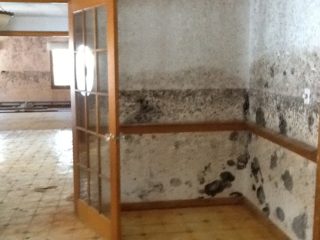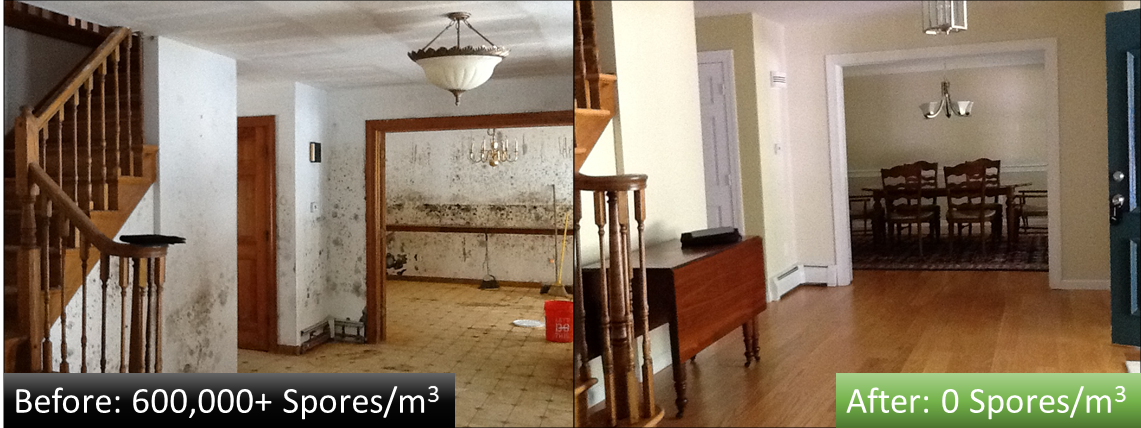Safely eliminate mold in a fraction of the time without the high costs and inconvenience of traditional mold remediation techniques. EnzyCleanseTM, a breakthrough technology in green biological contamination control, is an enzyme based formulation applied in fine mist form to contaminated areas.
BFB Green was contacted by a client to treat a 5,000 square foot foreclosed residence with significant mold contamination throughout entire structure, caused by burst water pipes. Initial third-party inspection reported indoor problem mold spore count to be in excess of 650,000 spores per cubic meter, which is 95% above normal levels. Typical types of mold found in structure were: Penicillium/Aspergillus, Stachybotrus, and Chactomium. Beyond the obvious physical deformations, according to the Center for Disease Control1, elevated levels of these spores can cause significant health issues, including upper respiratory tract symptoms, cough, and wheeze in normally healthy people.
As one part of a comprehensive remediation plan, BFB Green technicians treated the home with EnzyCleanseTM , which is formulated to interact with inanimate biological contaminants and render them harmless. Unlike conventional mold remediation chemicals such as ammonia, peroxide and chlorine, that quickly lose their effectiveness, enzymes are stable and remain effective for months, even years. This allows the product to penetrate and reach deep into subsurfaces. As a result, the need for costly demolition was significantly minimized, saving the client time and money.
The process is natural and non-volatile, meaning that the effectiveness of the EnzyCleanase treatment persists, penetrating all porous surfaces thoroughly, reaching affected areas well below the surface and point of first contact. EnzyCleanse is organic and totally safe for you, pets and plants!
Contact Us for additional information or to schedule a consultation.
References:
1 – Center for Disease Control & Prevention, https://www.cdc.gov/mold/stachy.htm


